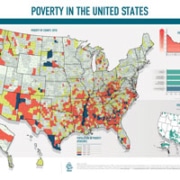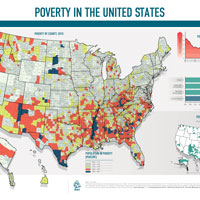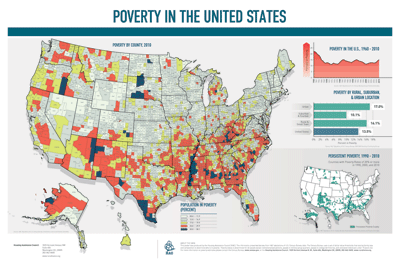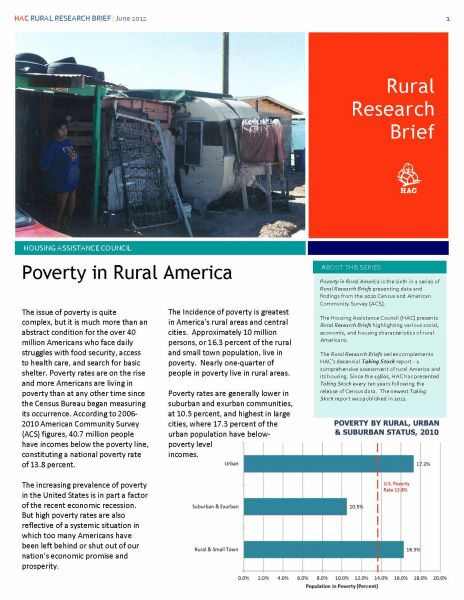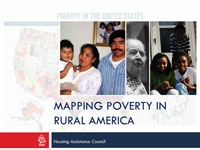News Formats. pdf
January 27, 2020
Vol. 49, No. 2
Administration’s FY21 budget to be released February 10 • Rural broadband funds available • USDA proposes rule changes related to faith-based organizations • Disaster funding for Puerto Rico moves forward • USDA offers advice on compliance with disability requirements • Updated guidance on lead-based paint offered by USDA and HUD • USDA annual tenant data released • 2020 Census launches • 2,500 Affordable Apartments in Rural Maine at Risk as Federal Program Ends • Alternative Drinking Water Systems: Use by Very Small Communities, Related Cost Savings, and Technical Assistance provided by EPA and USDA • Family Homelessness: Measuring Progress • How a Dozen Organizations are fighting Persistent Poverty Together • Research Shows Rental Assistance Reduces Hardship and Provides Platform to Expand Opportunity for Low-Income Families • Storytelling Toolkit: Lessons Learned from NHT’s “Where Will We Live?” • Two-thirds of Rural Counties Gain Jobs from November 2018 to 2019 • HAC Seeks Senior Portfolio Manager • SAVE THE DATE FOR HAC’S 2020 RURAL HOUSING CONFERENCE! • HAC offers Section 512 packaging training for nonprofits, March 10-12 in Virginia • Need capital for your affordable housing project?
HAC News Formats. pdf
January 27, 2020
Vol. 49, No. 2
Administration’s FY21 budget to be released February 10.
The Trump Administration is expected to release its budget request for fiscal year 2021 on February 10, beginning the process of funding the federal government for the year that begins on October 1, 2020. Overall spending levels for the year are already in place, set by legislation adopted in July 2019.
Rural broadband funds available.
The application window opens January 31 for the Rural eConnectivity Pilot Program (ReConnect Program), which offers loans, grants and combinations to facilitate broadband deployment in rural areas. State and local governments, tribes, nonprofits, for-profits and coops can apply by March 16. RUS also requests comments on the program by March 16. For more information, visit https://reconnect.usda.gov or contact Chad Parker, RUS, 202-720-9554.
USDA proposes rule changes related to faith-based organizations.
Changes to rules on faith-based entities as federal program providers have been suggested by USDA and several other federal departments and agencies. USDA’s proposal includes eliminating a requirement for a faith-based service provider to refer beneficiaries to an alternative provider if they do not want to receive services from the faith-based provider. It would also ensure that faith-based organizations are not required to provide any assurances or notices unless similar requirements are imposed on non-faith-based organizations. Comments are due February 18. For more information, contact Emily Tasman, USDA Office of General Counsel, 202–720-3351.
Disaster funding for Puerto Rico moves forward.
After missing a September 4 deadline, HUD has now published the conditions Puerto Rico must meet in order to access $8.25 billion in disaster mitigation (not recovery) funds appropriated in 2018. HUD announced it has prepared a grant agreement for another $8.2 billion in hurricane disaster recovery funds, though, according to the National Low Income Housing Coalition, the agreement’s terms are not publicly available and Puerto Rico has not yet signed it. HUD also recently named a Federal Financial Monitor who will oversee administration and disbursement of hurricane recovery funds for Puerto Rico and the U.S. Virgin Islands. Additional funding to help Puerto Rico recover from recent earthquakes has been proposed by some members of the House Appropriations Committee, who drafted a bill to provide $3.35 billion in FY20 emergency supplemental funding for the island, including $2 billion in CDBG disaster recovery monies.
USDA offers advice on compliance with disability requirements.
A January 10 Unnumbered Letter summarizes steps USDA staff and operators of USDA-financed rental housing should take to comply with Section 504 of the Rehabilitation Act of 1973, which requires accessibility for people with disabilities.
Updated guidance on lead-based paint offered by USDA and HUD.
Along with a table showing which HUD regulations on lead-based paint hazards apply to specific programs run by USDA RD agencies, Administrative Notice 4873 (December 5, 2019) lists exemptions, compliance funding sources, implementation responsibilities and details relevant to individual programs. HUD recently posted trainings and other resources online related to its lead safe housing rule.
USDA annual tenant data released.
USDA’s annual update of data on the tenants in Section 515 and 514/516 properties is now available online. Tenant characteristics as of September 2019 were similar to those in September 2018. Section 515 residents are still largely elderly or disabled (65.2%). The average income of all Section 515 residents is $13,551, an increase from $13,112 in 2018. During that one-year period, 214 Section 515 properties and 10 Section 514 properties – about 4,500 units, just over 1% of the total – left USDA’s portfolio. Past reports back to 2010 are posted on HAC’s website.
2020 Census launches.
On January 21 in Toksook Bay, Alaska the 2020 Census began counting U.S. residents to determine the number of seats each state will hold in the House of Representatives and how billions of dollars in federal funds will be allocated. Most U.S. households will receive information in March about responding. The Census is still recruiting temporary workers for positions across the country.
Recent publications and media of interest
- 2,500 Affordable Apartments in Rural Maine at Risk as Federal Program Ends details how the state is coping with the possibility of losing properties in USDA’s Section 515 rental program. Relying on research by HAC, the article explains the apartments’ continued affordability is uncertain. USDA’s preferred solution is for nonprofits to preserve assistance for tenants by buying the properties and extending the mortgages in the future. Nonprofits struggle with securing enough funding and resources, however.
- Alternative Drinking Water Systems: Use by Very Small Communities, Related Cost Savings, and Technical Assistance provided by EPA and USDA is a GAO report describing alternative drinking water systems that serve 500 or fewer people. Researchers found that cost savings from use of these systems varied widely depending on local factors. The report also covers EPA and USDA programs that fund technical assistance and training on small drinking water systems.
- Family Homelessness: Measuring Progress, an updated data tool from the National Alliance to End Homelessness, is intended to demonstrate progress on ending family homelessness from 2018 to 2019. Data are presented for each state and Continuum of Care. (The CoCs are listed by number rather than name; find your CoC’s number here.)
- How a Dozen Organizations are Fighting Persistent Poverty Together describes the Partners for Rural Transformation coalition of national and local organizations, in which HAC participates, saying it “gives a voice to the moral imperative to eliminate persistent poverty.”
- Research Shows Rental Assistance Reduces Hardship and Provides Platform to Expand Opportunity for Low-Income Families, a report by the Center on Budget and Public Policy Priorities, explains how federal rental assistance reduces homelessness and other hardships. The report states that rental assistance lifts 3 million people out of poverty. Another 15.8 million households who need such aid do not receive it due to funding limits.
- Storytelling Toolkit: Lessons Learned from NHT’s “Where Will We Live?” explains how telling residents’ stories can support affordable housing. While the kit is based on lessons learned from a national-level effort by the National Housing Trust and Enterprise Community Partners, much of its information applies to local and state work as well.
- Two-thirds of Rural Counties Gain Jobs from November 2018 to 2019, reports The Daily Yonder, but job growth is still fastest in central counties of large metropolitan areas. In general, the research shows that the more urban a county, the higher its rate of job growth.
HAC seeks Senior Portfolio Manager.
The Senior Portfolio Manager provides leadership and oversight to a team that performs a range of lending activities – closing, disbursement, monitoring, servicing and asset management of single-family and multifamily housing development loans – in HAC’s Loan Fund Division, based in Washington, DC. Email a resume and brief cover letter to jobs@ruralhome.org with “Senior Portfolio Manager” in the subject line. Applications will be considered as received.
SAVE THE DATE FOR HAC’S 2020 RURAL HOUSING CONFERENCE!
The conference will be held in Washington, DC on December 2-4, 2020 with pre-conference meetings on December 1. The HAC News will announce more details, including registration, as they become available.
HAC offers Section 502 packaging training for nonprofits, March 10-12 in Virginia. This three-day advanced course trains experienced participants to assist potential borrowers and work with RD staff, other nonprofits and regional intermediaries to deliver successful Section 502 loan packages. The training will be held in Glen Allen, VA on March 10-12. For more information, contact HAC staff, 404-892-4824.
Need capital for your affordable housing project? HAC’s loan funds provide low interest rate loans to support single- and multifamily affordable housing projects for low-income rural residents throughout the U.S. and territories. Capital is available for all types of affordable and mixed-income housing projects, including preservation, farmworker, senior and veteran housing. HAC loan funds can be used for pre-development, site acquisition, site development and construction/rehabilitation. Contact HAC’s loan fund staff at hacloanfund@ruralhome.org, 202-842-8600.
Please note: HAC is not able to offer loans to individuals or families. Borrowers must be nonprofit or for-profit organizations or government entities (including tribes).

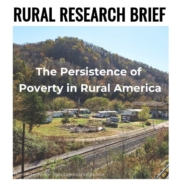 Housing Assistance Council
Housing Assistance Council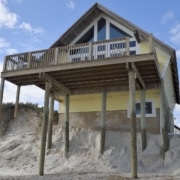
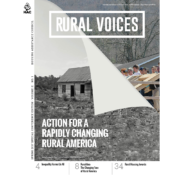
 Ruralities: The Changing Face of Rural America
Ruralities: The Changing Face of Rural America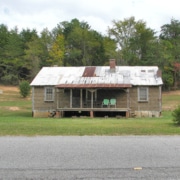

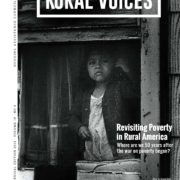

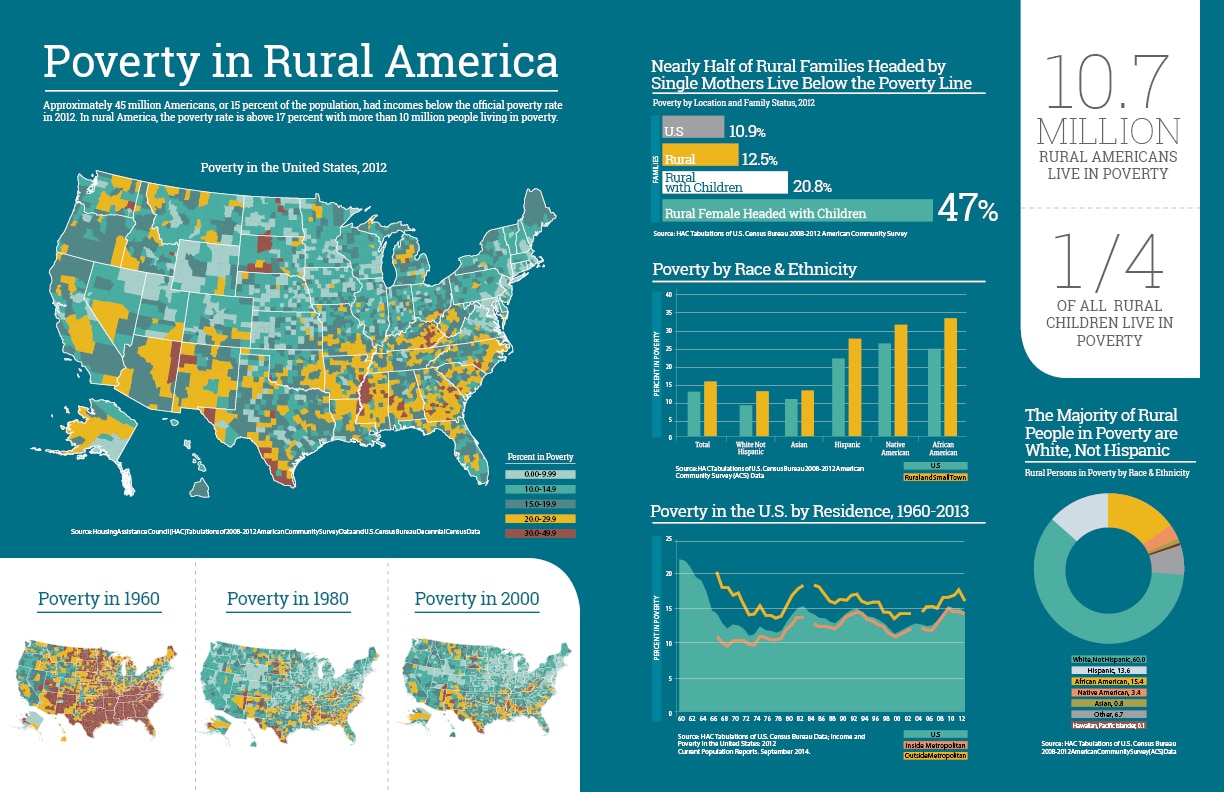 Poverty in Rural America
Poverty in Rural America